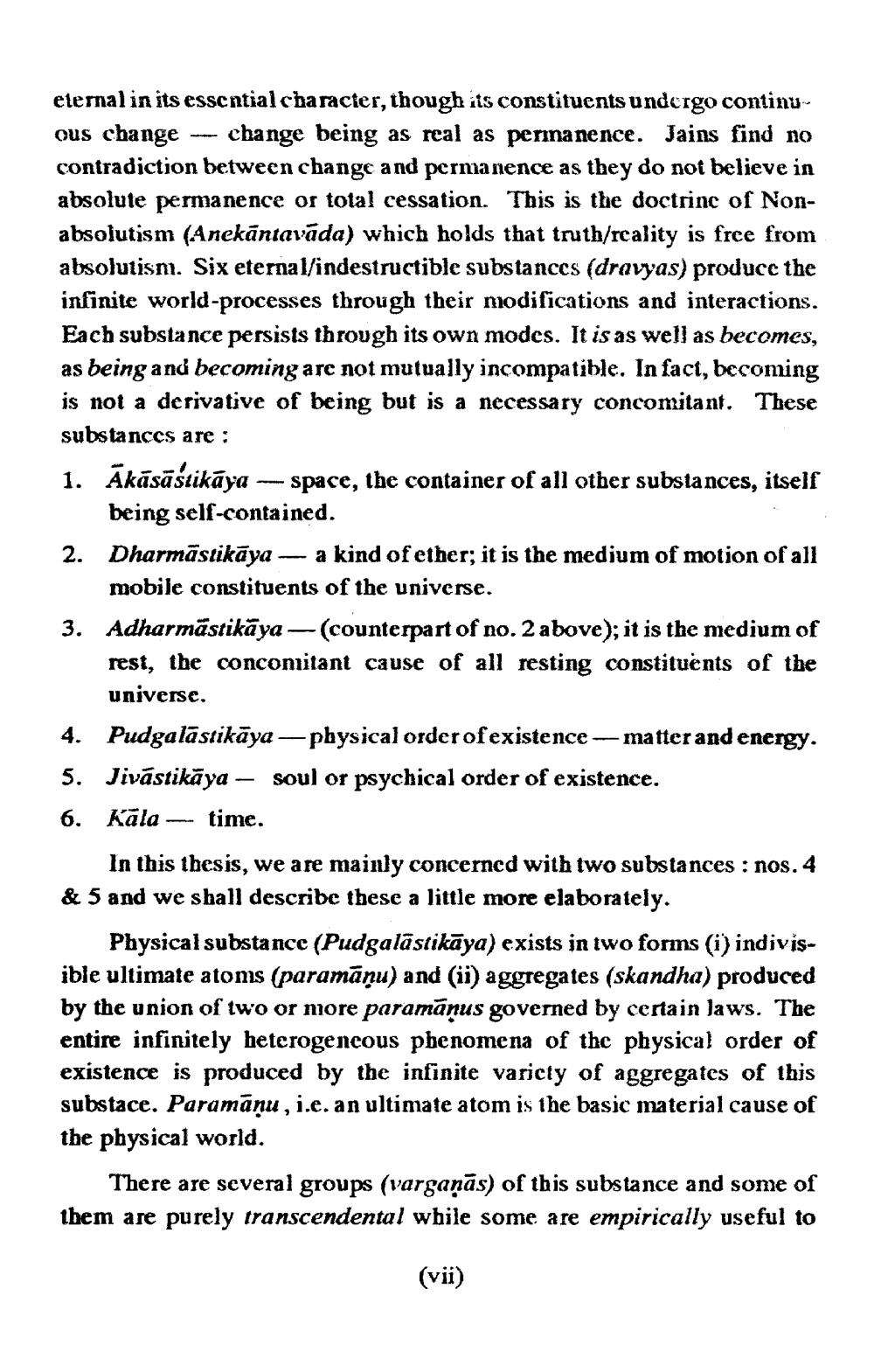________________
eternal in its essential character, though its constituents undergo continu. ous change -- change being as real as pernanence. Jains find no contradiction between change and permanence as they do not believe in absolute permanence or total cessation. This is the doctrine of Nonabsolutism (Anekāntavāda) which holds that truth/reality is free from absolutism. Six eternal/indestructible substances (dravyas) produce the infinite world-processes through their modifications and interactions. Each substance persists through its own modes. It is as well as becomes, as being and becoming are not mutually incompatible. In fact, becoming is not a derivative of being but is a necessary concomitant. These substances are : 1. Akāsāstikāya -- space, the container of all other substances, itself
being self-contained. 2. Dharmāstikāya — a kind of ether; it is the medium of motion of all
mobile constituents of the universe. 3. Adharmāstikāya - (counterpart of no. 2 above); it is the medium of
rest, the concomitant cause of all resting constituents of the
universe. 4. Pudgalāstikāya - physical order of existence -- matter and energy. 5. Jivástikāya – soul or psychical order of existence. 6. Kāla --- time.
In this thesis, we are mainly concerncd with two substances : nos.4 & 5 and we shall describe these a little more elaborately.
Physical substance (Pudgalāstikāya) exists in two forms (i) indivisible ultimate atoms (paramāņu) and (ii) aggregates (skandha) produced by the union of two or more paramánus governed by certain laws. The entire infinitely heterogeneous phenomena of the physical order of existence is produced by the infinite variety of aggregates of this substace. Paramāņu , i.e. an ultimate atom is the basic material cause of the physical world.
There are several groups (varganās) of this substance and some of them are purely transcendental while some are empirically useful to
(vii)




